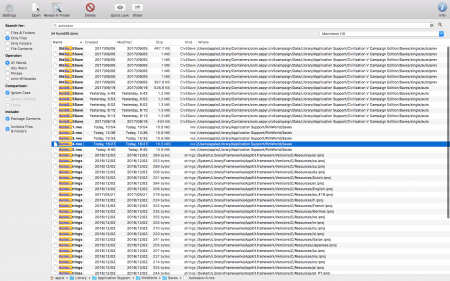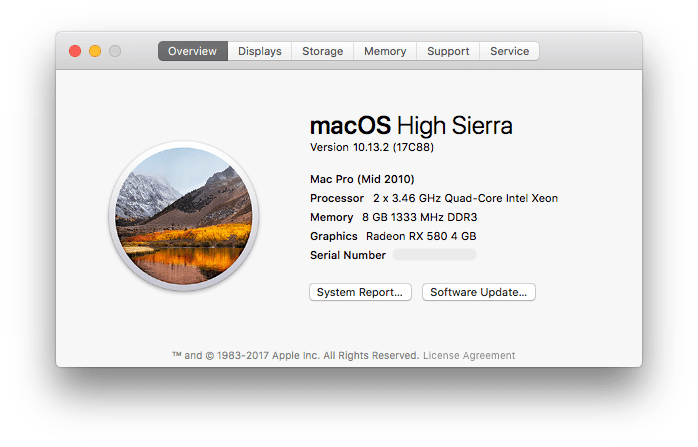PART ONE: Sapphire Radeon HD 7950
versus other Mac Pro GPUs
Cubase 3 sx for mac. Posted Tuesday, March 19th, 2013 by rob-ART morgan, mad scientist
Correction on Compatibility (March 20th) -- See red text under Recommendation
Finally! After three years, a new 'blessed' GPU for the Mac Pro running OS X: the Sapphire Radeon HD 7950 Mac Edition. I'm sure it has piqued the curiosity of every Mac Pro owner wishing for a faster GPU. So how fast is it? Let's get right to the test results.
GRAPH LEGEND
Radeon 7950 = Sapphire AMD Radeon HD 7950 GPU (3G VRAM)
Radeon 5870 = AMD Radeon HD 5870 GPU (1G VRAM)
Radeon 5770 = AMD Radeon HD 5770 GPU (1G VRAM)
GTX680MX = NVIDIA GeForce GTX 680MX GPU (2G VRAM)
GTX675MX = NVIDIA GeForce GTX 675MX GPU (1G VRAM)
GTX 285 = NVIDIA GeForce GTX 285 GPU (1G VRAM)
Quadro 4000 = NVIDIA Quadro 4000 GPU (2G VRAM)
All Mac Pro GPUs above were in a in a 'Mid 2010' Mac Pro 3.33GHz Hex-Core. The two iMac GPUs (the GTX 675MX and 680MX) were embedded in the 'Late 2012' (27') iMac 3.4GHz Core i7. All Macs were running OS X 10.8.3. The AMD GPUs required a patch to run Heaven and Valley. AMD compatible versions of those apps will soon be available to all users.
Blackmagic Design's DaVinci Resolve 9adds speed and power to color grading of HD video. It uses the GPU to apply and playback effects in real time -- no rendering required. However, the more effect nodes created, the slower the playback.
Our test project featured 8 clips (771 frames) of a 32 second 1920x1080 10-bit YUV 4:2:2 SDI 24fps video. We set the maximum playback framerate to 300 fps. We wanted to see how fast each GPU could playback with three nodes. Results are average frames per second. (LONGEST bar means FASTEST.)
Apple's Motion 5comes with various project templates. We use the 'Atmospheric - Open' 600 frame 1920x1080 template for our test. We time how long it takes to render the RAM Preview and then calculate the speed in frames per second. (LONGEST bar means FASTEST.)
OceanWave OpenCL benchmark(download link) was originally used as an Apple OpenCL source code demo. It was recently updated including options to run windowed or fullscreen, with or without anti-aliasing. We posted the results for Windowed with no AA. (LONGER bar means FASTER.)
Unigine's Heaven Benchmark 4.0 is an OpenGL 'real world' benchmark that flies through 26 scenes of a village, a ship, and floating islands applying advanced ambient occlusion, volumetric clouds, and various lighting conditions with refraction. Two presets help standardize comparison testing: Basic and Extreme. (It is cross platform. For Windows users it is a test of DirectX.)
We used Extreme preset for our testing which specifies 1600x900 windowed resolution with 8x Anti-aliasing, Ultra Quality for Shaders and Textures, and with Occlusion, Refraction, and Volumetric Shadows enabled. We posted AVERAGE frames per second. (LONGER means bar means FASTER.)
Unigine also has new OpenGL benchmark called Valley. It 'flies' through forest-covered valley surrounded by vast mountains. It amazes with its scale from a bird’s-eye view of 64 million meters of extremely detailed terrain down to every leaf and flower petal. It features advanced visual technologies: dynamic sky, volumetric clouds, sun shafts, DOF, ambient occlusion. (It is cross platform. For Windows users it is a test of DirectX.)
Valley provides three presets to help standardize comparison testing: Basic, Extreme, and Extreme HD. We used Extreme preset: 1600x900 windowed resolution with 8x Anti-aliasing, Ultra Quality for Shaders and Textures, and with Occlusion, Refraction, and Volumetric Shadows enabled. We posted AVERAGE frames per second. (LONGER bar means FASTER.)
Sid Meier's Civilization Vis now on Steam. By entering '-LeaderBenchmark' in the Properties > Set Launch Options, it runs through multiple animated sequences of the various World Leaders. Though it does not simulate real game play, it is GPU intensive. Resolution was 2560x1440 with FullScreen ON. Quality settings were on 'Medium' with one exception -- Texture Quality was set to 'High.' VSync and High Detail Strategic View were both OFF. (LONGER bar means FASTER.)
Feral Interactive's Dirt 2has a built-in benchmark where Travis Pastrana races 7 clones of himself in a winner take all one lap race on a dirt track with puddles of water. We used best quality settings at 2560x1440. Results are average frames per second. (LONGEST bar means FASTEST.)
For Mac OS 9 users: This version is for Mac OS X only. For Mac OS 8.6 thru Mac OS 9.2.2, see: The Sims (original) + expansions. Download The Sims Complete Collection (for OSX) for Mac. The-Sims-no-CD-patch.dmg (36.36 MiB / 38.12 MB) No-CD mount after full install for OS X only using Toast 6 / DMG image. Mac OS Lion (10.7) On October 3, 2019 we released a patch update that will no longer support The Sims 4 on that operating system. If you want to continue playing the game while running macOS Lion (10.7), you will need to disable automatic updates on Origin and stop taking any future updates. You’ll still be able to play as normal. Before you start The Sims 4 Free Download For MAC make sure your Mac meets minimum system requirements. OS: Mac OS® X 10.7.5 (Lion) PROCESSOR: Intel Core 2 Duo 2.4Ghz Processor or better; VIDEO CARD: NVIDIA GeForce 320M, 9600M, 9400M,ATI Radeon HD 2600 Pro or better. Video RAM of 256MB or better. MEMORY: 4GB RAM; HARD DRIVE: 12 GB of Hard. OS: Mac OS® X 10.8 (Mountain Lion) CPU: Intel Core 2 Duo 2.4GHz Processor or better RAM: At least 4 GB RAM HARD DRIVE: At least 14 GB of free space with at least 1 GB additional space for custom content and saved games VIDEO: NVIDIA GeForce 9600M GT, ATI Radeon HD 2600 Pro or better. Video RAM of 256MB or better INPUT: Keyboard and Mouse. 
ANALYSIS
1. With one exception (Motion), the Radeon HD 7950 is a significant improvement over the two GPUs Apple offers currently as factory options for the Mac Pro (Radeon HD 5770 and 5870).
2. The Radeon HD 7950 is clear winner over the current optional Quadro 4000 for Mac kit sold on the Apple Store. It also handily beats the GeForce GTX 285 -- a card once offered in a kit but no longer in production. Many Mac Pro owners likely still have it installed.
3. We included the 2012 iMac's GeForce GTX 680MX as what we consider the strongest existing NVIDIA competition to the AMD GPUs. As you can see the Radeon HD 7950 beats it or 'meets' it in four out of the seven tests we featured. And in all but one test, it is 'in the conversation.' The GTX 680MX is a 'mobile' GPU and currently only available to Mac users in the 2012 iMac, but it shows you the potential if a company decided to offer an OS X compatible GeForce GTX 680 GPU or something similar. (NOTE: NVIDIA has announced the Quadro K5000 for Mac -- it is expected to ship soon.)
RECOMMENDATION
If you have a Mac Pro running a Radeon HD 5770, Radeon HD 4870, GeForce GTX 285, Quadro 4000, GeForce GT120, GeForce 8800 GT, the new Sapphire Radeon HD 7950 would make a very strong upgrade. The only exception to this advice would be if you are running pro apps whose only GPU acceleration relies on CUDA support. One recent example is Octane Render. In that case, you must hope for a newer, faster NVIDIA CUDA 'aware' GPU that is OS X compatible. NEWS FLASH: EVGA will be selling a Mac Edition of the GeForce GTX 680. We will be testing it and adding those results to this page.
CORRECTION: The Radeon HD 7950 is compatible with all existing Mac Pros from 2008 - 2012 (though Sapphire is officially specifying 2010 and after). It can run under Lion 10.7.5 and Mt. Lion 10.8.2 by installing special driver that comes on a disc. No special driver needed for 10.8.3.
AND THAT'S NOT ALL. Check out 'Part Duex' with results for seven more apps and 'Shootout with the Sharks' where the 7950 goes up against 'extreme' GPUs -- flashed and unflashed.




